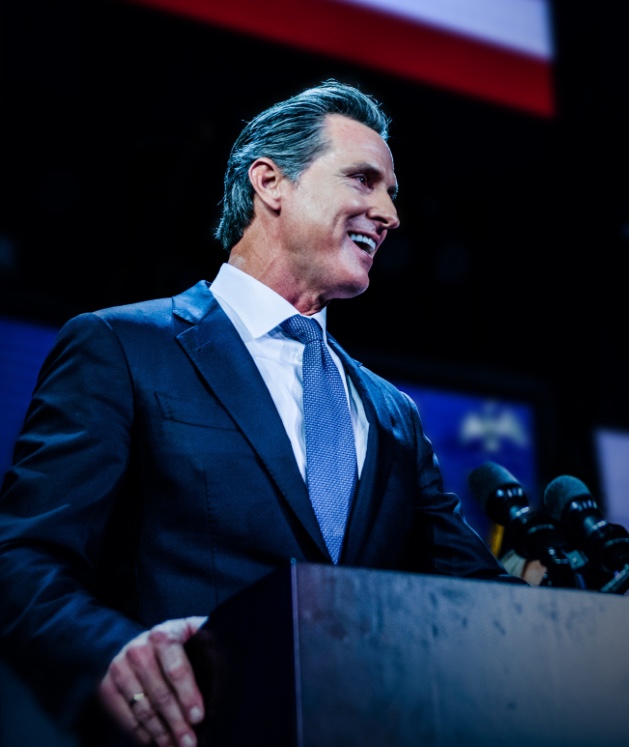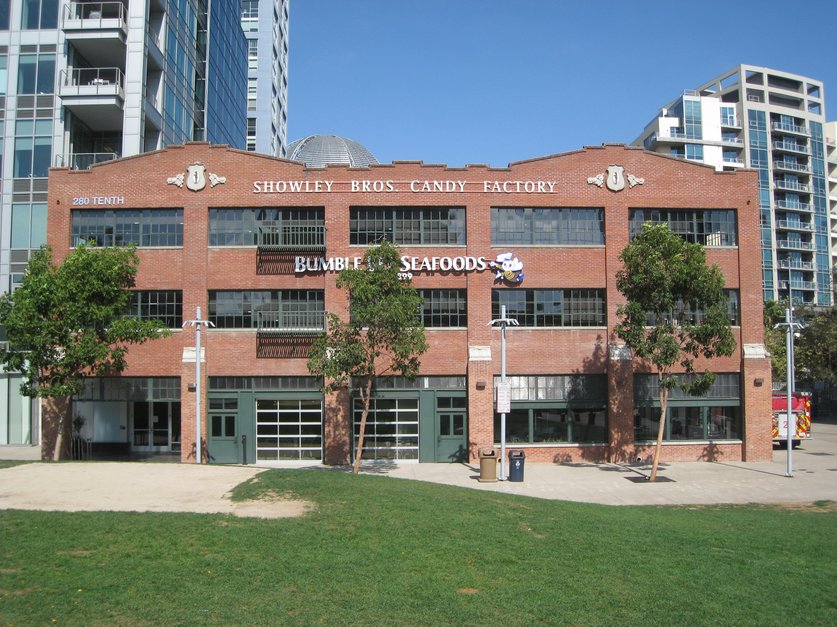Daily Business Report-Dec. 3, 2018
Gov.-Elect Gavin Newsom (Credit: Gavin Newsome)
Commentary
Gavin Newsom will inherit troubled bullet train project
State auditor rips the project for wasting billions of dollars
By Dan Walters | CALmatters Columnist
The messiest bit of unfinished business Gov. Jerry Brown will bequeath to successor Gavin Newsom is one of the outgoing governor’s pet projects, a north-south bullet train project.
One could even say it’s a hot mess, given the revelations of a new audit of the multi-billion-dollar project’s first phase.
That initial segment — 100-plus miles of track in the mostly flat, sparsely populated San Joaquin Valley, from Chowchilla to an orchard near Shafter, north of Bakersfield — was supposed to be the easiest to design and build.
However, State Auditor Elaine Howle told the Legislature that the High-Speed Rail Authority’s “flawed decision making regarding the start of high-speed rail system construction in the Central Valley and its ongoing poor contract management for a wide range of high-value contracts have contributed to billions of dollars in cost overruns for completing the system.”
Furthermore, even as costs soared, the state didn’t even come close to meeting the initial 2017 deadline for completion of the segment specified in a 2010 federal grant. Howle told legislators it also won’t meet a 2022 deadline extension “unless…construction progresses twice as fast as it has to date,” adding, “Missing the deadline could expose the state to the risk of having to pay back as much as $3.5 billion in federal funds.”
It wasn’t the first time that Howle and other independent analysts have criticized not only how the San Joaquin Valley stretch was proceeding, but the project’s biggest issue – a lack of financing to extend it north to San Francisco and south to Los Angeles.
Whenever track reaches that orchard near Shafter, the next phase is supposed to be connecting Chowchilla with San Jose by tunneling through the coastal mountains in the neighborhood of the Pacheco Pass.
In theory, getting to San Jose would allow the system to begin carrying paying passengers, because the bullet train would be “blended” with existing Caltrain service between San Jose and San Francisco that’s soon to be electrified.
However, tunneling through the mountains will be expensive and the High-Speed Rail Authority hasn’t found a source of financing, even though the system gets 25 percent of the state’s revenues from auctioning off carbon emission allowances through the “cap-and-trade” system.
Moreover, “blending” the bullet train with Caltrain and other commuter rail systems in Southern California would, as Howle points out, inevitably slow high-speed service. That, in turn, would it make it nearly impossible to meet the 160-minute standard for trips between San Francisco and Los Angeles specified in the $9.95 billion state bond issue approved by voters more than a decade ago.
So that’s the situation that Newsom will inherit next month. It’s more than likely that the 2022 deadline for the San Joaquin segment won’t be met either, exposing the state to federal sanctions. But even were it met, it would be a train to nowhere unless some way is found to extend it further, embarrassing every politician involved with it.
“We need to make some changes and we need to make them now,” Sen. Jim Beall, a San Jose Democrat who chairs the Senate Transportation and Housing Committee, said during a hearing last week on Howle’s sharply critical findings.
The need for a bullet train has never been adequately proven and its political cheerleaders have lowballed its costs from the onset, as Howle’s audit demonstrates anew.
Newsom has expressed some skepticism about the project’s viability in the past. However, he will own this managerial mess on Jan. 7 and it could easily become a white elephant on his watch.
CALmatters is a public interest journalism venture committed to explaining how California’s state Capitol works and why it matters. For more stories by Dan Walters, go to calmatters.org/commentary.
________________
Study release: San Diego home to
350+ precision health companies
According to San Diego Regional EDC’s newly released study, “San Diego’s Precision Health Ecosystem,” San Diego is home to more than 350 precision health companies that hold 3,610 patents. The web-based study – precisionhealthSD.org – includes a historic timeline, cluster map, local and state overviews, and a series of video testimonials from local business leaders. From personalized cancer vaccines to record-breaking DNA sequencing of newborns, San Diego companies and research institutes are revolutionizing health care as we know it. Read the study here.
________________
La Jolla Institute scientists among
world’s most highly cited researchers
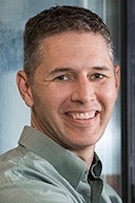
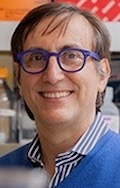
Among the flood of research papers published by scientists and scholars in academic journals year in and year out—by some estimates their numbers now exceed 2,500,000 papers annually—the research contributions of scientists at La Jolla Institute for Immunology stand out for their global impact.
For the third year in a row, Dr. Shane Crotty’s pioneering studies on vaccine-related immunology have earned him a spot among “The World’s Most Influential Minds.” Crotty, a professor in the Division of Vaccine Discovery at La Jolla Institute for Immunology, is driven by his desire to understand the fundamentals of what makes agood immune response to help tailor vaccines.
This year he is joined by Dr. Alessandro Sette, professor and head of the Division of Vaccine Discovery, whose sustained efforts to systematically dissect the immune response to a wide range of microbes and allergens has a tremendous impact on the field of immunology.
________________
Cal State San Marcos named one
of best colleges for student voting
Cal State San Marcos has been named to Washingon Monthly’s 2018 list of America’s Best Colleges For Student Voting. A part of The College Guide and Rankings – which rates colleges and universities on their contributions to social mobility, research and public service – this is a first-of-its-kind list of the schools doing the most to turn students into citizens.
CSUSM’s inclusion on the list demonstrates the commitment that the University has made to promote civic engagement among the student body, encouraging students to vote and actively participate in community decisions.
CSUSM was one of only 132 two- and four-year colleges to make the list. It was also among just 16 from California and three in the California State University system (the others are Cal State Northridge and Cal State San Bernardino).
________________
New leadership announced for
Center for Sustainable Energy
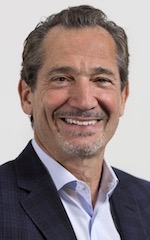
Lawrence E. Goldenhersh, a San Diego software entrepreneur and environmental advocate, has been appointed president of the San Diego-based nonprofit Center for Sustainable Energy. The board of directors also announced that Mary McGroarty, a partner at the accounting firm Lindsay & Brownell and current vice-chair of the CSE board of directors, will assume the role of board chair.
Goldenhersh, a former CSE board member, has served for nearly a year as CSE’s interim president. He brings to the center more than 35 years of experience
in the sustainability and environmental sectors in both profit and nonprofit industries.
During the past year, Goldenhersh has significantly grown CSE, increasing total employee headcount by over 20 percent (currently 167), opening two new offices (Brooklyn, New York, and Sacramento) and expanding business in new states. CSE’s 2018 annual revenues are expected to grow more than 10 percent, while almost doubling surplus contributions from operations. Growth has come with important new contracts, including a contract for administration of the Solar on Multifamily Affordable Housing program, a 10-year, $1 billion solar initiative in California that the center won in partnership with a team of nonprofits.
In 1999, Goldenhersh founded Enviance Inc., an environmental technology company and served as its president and CEO until the company’s sale in 2015. Under his leadership, Enviance pioneered the use of the Internet to provide environmental management software to industry and government.
________________


